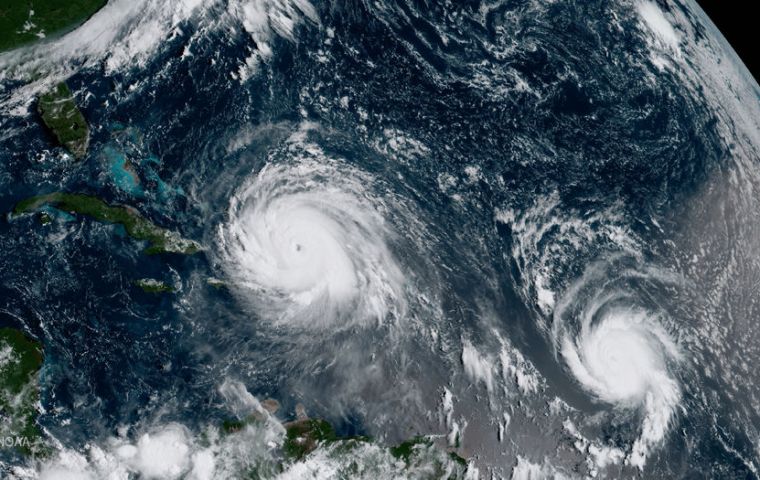MercoPress. South Atlantic News Agency
LatAm and Caribbean hit hard by crises stemming from El Niño and climate change, according to WMO
 Rio Grande do Sul's “catastrophe is a tragic reminder of how increasingly intense and frequent climate hazards undermine socioeconomic development,” Saulo explained
Rio Grande do Sul's “catastrophe is a tragic reminder of how increasingly intense and frequent climate hazards undermine socioeconomic development,” Saulo explained The World Meteorological Organization (WMO) pointed out last week that Latin America and the Caribbean were going through a series of weather crises linked to the El Niño phenomenon and climate change. The current one in the Brazilian State of Rio Grande do Sul was one of the worst.
The UN agency stressed in its latest report that last year was the warmest on record. At the same time, there has been “a major shift” in the distribution of precipitation, causing droughts and forest fires as well as floods and landslides.
“In all types of climatic and environmental variables records have been broken during 2023″, said WMO Secretary General Celeste Saulo, in presenting the report. ”Latin America and the Caribbean have been severely affected by the effects of El Niño which are, of course, in addition to those of human-induced climate change,“ the Argentine expert also noted.
According to the WMO, El Niño is a natural weather pattern associated with ocean surface warming in the tropical Pacific, which usually occurs every two to seven years and lasts between nine and twelve months. This time around, it is currently occurring in the context of a climate altered by human activities.
Regarding the crisis in Rio Grande do Sul, Saulo said that ”this catastrophe is a tragic reminder of how increasingly intense and frequent climate hazards undermine socioeconomic development.”
In addition, UN Office for Disaster Risk Reduction (UNDRR) Director Paola Albrito said that some 11 million people in Latin America and the Caribbean were affected by disasters in 2023, mostly weather-related, “resulting in economic losses of more than US$ 20 billion.”
“Unfortunately, we are seeing this happening now in Brazil,” she added.
Among the climate disasters of 2023, the WMO highlighted Hurricane Otis, which devastated the Mexican beach resort of Acapulco in October; and the intense drought that reduced the water levels in the Negro River in the Brazilian Amazon to a historic low; “severely” disrupted traffic through the Panama Canal; and hit northern Argentina, southern Brazil, and Uruguay, which experienced its driest summer in 42 years and suffered a critical water deficit, particularly in Montevideo.
The agency also recalled heavy rains in southeastern Jamaica, Haiti, and the Dominican Republic, as well as large forest fires in drought-hit countries.
In 2023, the average temperature was the highest ever recorded in Latin America and the Caribbean, the WMO said. It was 0.82 °C above the average for the 1991-2020 period, and 1.39 °C above the reference value for the 1961-1990 period. Mexico experienced the fastest warming rate in the region, with temperatures rising by 0.3°C per decade between 1991 and 2023. In August, Mexico recorded a scorching 51.4°C in its northern territory.
The WMO also warned that the rate of increase of the average sea level in the South Atlantic and in the subtropical and tropical zones of the North Atlantic exceeds the world average.
On the other hand, Chile's Echaurren Norte glacier lost some 31 meters of water equivalent between 1975 and 2023. Accelerated glacier melting and rising sea levels pose risks to coastal areas, including small island nations in the Caribbean.
The WMO highlighted that 12 of the 35 countries in the Americas are developing adaptation plans to climate change but insisted that the meteorological and climate services provided in the region were “insufficient.”
Albrito recalled that only about 1% of official development assistance in Latin America and the Caribbean was earmarked for disaster prevention. “This low level of investment increases vulnerabilities and leaves many of the region's least developed countries in a constant state of disaster recovery,” she said.




Top Comments
Disclaimer & comment rulesCommenting for this story is now closed.
If you have a Facebook account, become a fan and comment on our Facebook Page!